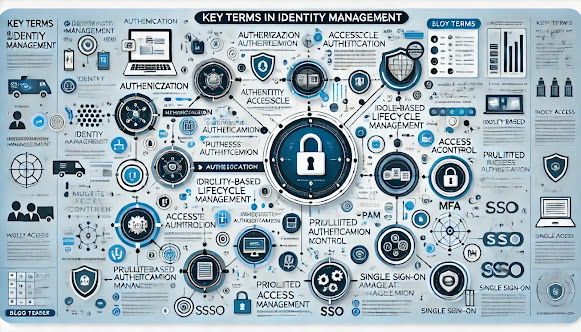In today’s digital landscape, Identity Management (IDM) plays a crucial role in ensuring secure and efficient access to systems, applications, and data. Organizations must manage user identities, authentication, and access controls to protect sensitive information and prevent unauthorized access.
Understanding key terms in Identity Management is essential for IT professionals, security teams, and business leaders to implement robust identity governance strategies. From authentication methods like Multi-Factor Authentication (MFA) to access control models such as Role-Based Access Control (RBAC), these concepts help define how identities are verified, authorized, and managed within an organization.
This guide will explore the essential terminology in Identity Management, helping you navigate the complexities of securing digital identities and maintaining regulatory compliance.
- Authentication & Authorization
- Authentication – Verifying a user's identity
- Authorization – Granting or restricting access based on identity
- Multi-Factor Authentication (MFA) – Using multiple methods (e.g., password + biometrics) to verify identity
- Single Sign-On (SSO) – Allowing users to log in once and access multiple systems
- Federated Identity – Using a shared identity across multiple organizations
- Biometric Authentication – Using fingerprint, face, or iris scans for authentication
- Identity & Access Management (IAM)
- Identity Provider (IdP) – A system that verifies user identities
- Access Control – Restricting access based on policies
- Role-Based Access Control (RBAC) – Granting access based on roles
- Attribute-Based Access Control (ABAC) – Granting access based on attributes like job title or location
- Privileged Access Management (PAM) – Managing high-level administrative accounts
- User Provisioning – Creating, managing, and deactivating user accounts
- Security & Compliance
- Zero Trust – A security model that assumes no implicit trust
- Least Privilege Principle – Giving users the minimum access needed
- Identity Governance – Managing compliance and policies for user identities
- Directory Services – Centralized identity repositories like Active Directory (AD)
- Audit Logs – Tracking identity-related activities
- Identity Lifecycle Management – Managing identities from onboarding to offboarding
- Authentication Protocols & Standards
- OAuth 2.0 – A protocol for secure authorization
- OpenID Connect (OIDC) – A protocol for authentication based on OAuth 2.0
- SAML (Security Assertion Markup Language) – A standard for exchanging authentication data
- Kerberos – A network authentication protocol
- LDAP (Lightweight Directory Access Protocol) – A protocol for accessing and managing directory information



















